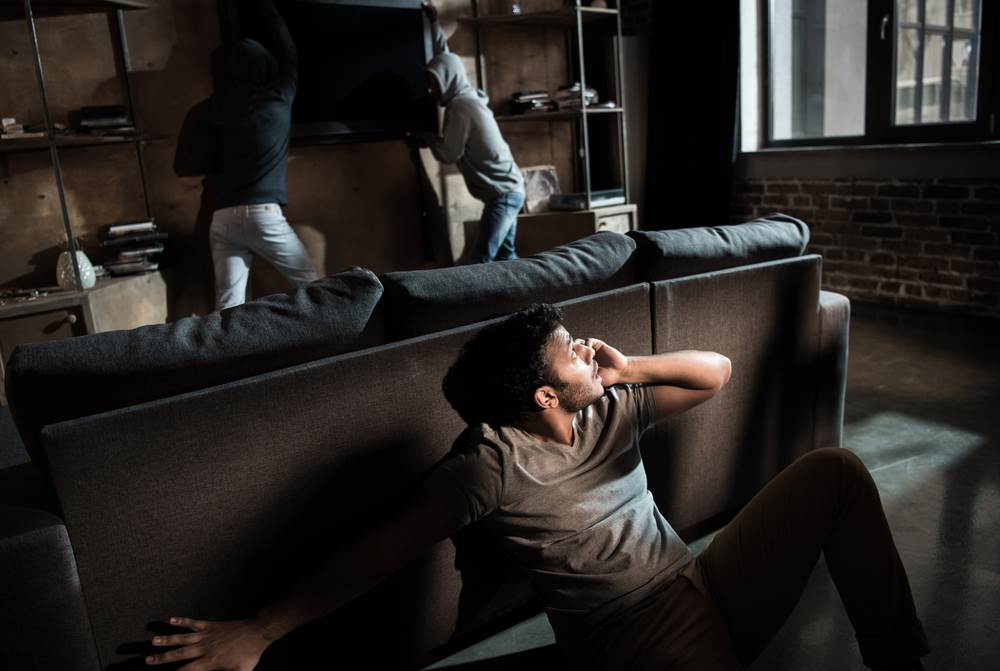Penal Code 213 PC is the California statute that sets forth the punishment for the crime of robbery. Under this law, while robbery in the first degree is a felony offense punishable up to 9 years in state prison, second-degree robbery is a felony punishable by up to 5 years in prison. These sentences will increase if one of California’s sentencing enhancements applies, such as the great bodily injury enhancement per Penal Code 12022.7.
The language of Penal Code 213 states that:
(a) Robbery is punishable as follows:
(1) Robbery of the first degree is punishable as follows:
(A) If the defendant, voluntarily acting in concert with two or more other persons, commits the robbery within an inhabited dwelling house, a vessel as defined in Section 21 of the Harbors and Navigation Code, which is inhabited and designed for habitation, an inhabited floating home as defined in subdivision (d) of Section 18075.55 of the Health and Safety Code, a trailer coach as defined in the Vehicle Code, which is inhabited, or the inhabited portion of any other building, by imprisonment in the state prison for three, six, or nine years.
(B) In all cases other than that specified in subparagraph (A), by imprisonment in the state prison for three, four, or six years.
(2) Robbery of the second degree is punishable by imprisonment in the state prison for two, three, or five years.
(b) Notwithstanding Section 664, attempted robbery in violation of paragraph (2) of subdivision (a) is punishable by imprisonment in the state prison.
Under Penal Code 211, people commit robbery when they take the personal property of someone else, while it is in that person’s possession, and do so against that person’s will and with the use of force or fear.
California law says that there are two forms of robbery. These are:
- robbery of the first degree, and
- robbery of the second degree.
First-degree robbery includes robbery of
- any driver or passenger of a bus, taxi, streetcar, subway, cable car, or other vehicle,
- any person in an inhabited structure, or
- any person who has just used an automated teller machine (ATM) and is still in the vicinity of the ATM.
All other forms of robbery are considered second-degree robbery.
Our California criminal defense attorneys will explain the following in this article:
- 1. What is the penalty for robbery?
- 2. Are there sentence enhancements for robbery?
- 3. How does Penal Code 211 define robbery?
- 4. How does California law define first-degree robbery?
- 5. What is second-degree robbery?

Under Penal Code 211, robbery in the first degree is a felony offense punishable up to 9 years in state prison.
1. What is the penalty for robbery?
The penalties for Penal Code 211 robbery depend on whether it is classified as first-degree or second-degree robbery.
First-degree robbery is a felony offense (as opposed to a misdemeanor) punishable by up to 9 years in state prison if:
- the defendant acted in concert with two or more people, or
- the robbery occurred within an inhabited structure.i
All other first-degree robbery charges are felony offenses punishable by up to 6 years in state prison.ii
As to criminal cases involving second-degree robbery, the crime is charged as a felony and is punishable by custody in state prison for up to five years.iii
Attempted robbery is typically punished by one-half of the prison term that the defendant would have received if he/she had successfully completed the crime.iv
There is no third-degree robbery under California law.
2. Are there sentence enhancements for robbery?
In addition to the above robbery penalties, there are a few sentencing enhancements that can add additional prison time to a robbery conviction.
For example, if a defendant commits robbery and causes another person to suffer a “great bodily injury” during the commission of the crime, then the defendant could be subject to California Penal Code 12022.7, California’s great bodily injury enhancement.v
This sentencing enhancement can add up to an additional 6 years to a person’s robbery sentence.vi
Further, note that robbery is considered a “violent felony” under California law.vii This means it is a so-called “strike offense” under California’s “three strikes” law.
Per this law, if someone is convicted of robbery and is then subsequently charged with any other California felony, that person will face twice the normal sentence for that felony.viii
Also, if someone accumulates three “strike” convictions, one or more of which may be a PC 211 robbery conviction, then he/she will receive a sentence of 25 years to life in state prison.ix

First-degree robbery requires that the defendant acted in concert with two or more people, or the robbery occurred within an inhabited structure.
3. How does Penal Code 211 define robbery?
A prosecutor must prove the following to successfully convict someone of robbery:
- the defendant took a person’s property,
- the property was in the possession of another person,
- the property was taken from the other person or that person’s immediate presence,
- the property was taken against that person’s will,
- the defendant used force or fear to take the property or to prevent the person from resisting, and
- when the defendant used force or fear, he/she intended to deprive the owner of the property permanently or for a long enough time to deprive him/her of a major portion of its value.x
Note that the defendant’s specific intent to take the property must have been formed before or during the time he/she used force or fear. If the defendant did not form this required intent until after using the force or fear, then he/she did not commit robbery.xi
Two related offenses to robbery include:
- grand theft, and
- petty theft.
Per Penal Code 487, grand theft is the crime where people unlawfully take someone else’s property that is valued at $950.00 or more.
Per Penal Code 484, petty theft is the crime where people wrongfully take or steal someone else’s property and the value of the property is $950.00 or less.
4. How does California law define first-degree robbery?
California law says that first-degree robbery is any robbery where any of the following is true:
- the victim is a driver or passenger of a bus, taxi, cable car, streetcar, trackless trolley, subway, or other similar transportation for hire,
- the robbery takes place in an inhabited house, boat, or trailer, or
- the robbery takes place while or immediately after the victim uses an ATM.xii
A house or structure is “inhabited” if someone lives there, and either is present or has left but intends to return.xiii
5. What is second-degree robbery?
Penal Code 212.5 PC states that any other robbery, not mentioned under section 4 above, is second-degree robbery.xiv
Note that a person has the right to challenge any robbery charge with a legal defense. A few common defenses include accused people showing that:
- they were arrested because of mistaken identity, and
- law enforcement stopped or arrested them without probable cause.
For additional help…

Contact us for help
For additional guidance or to discuss your case with a criminal defense lawyer, we invite you to contact our law firm at the Shouse Law Group. Our attorneys provide both free consultations and legal advice you can trust.
Legal References:
- California Penal Code Section 213a1A PC.
- California Penal Code 213a1B PC.
- California Penal Code 213a2 PC.
- See California Penal Code 664 PC.
- California Penal Code 12022.7 PC.
- See same.
- Penal Code 667.5 PC.
- Penal Code 667e1PC.
- See same.
- CALCRIM No. 1600 – Robbery. Judicial Council of California Criminal Jury Instructions (2020 edition)
- See same. See also Rodriguez v. Superior Court (1984) 159 Cal.App.3d 821.
- California Penal Code 212.5 PC.
- See same.
- California Penal Code 212.5c PC.
